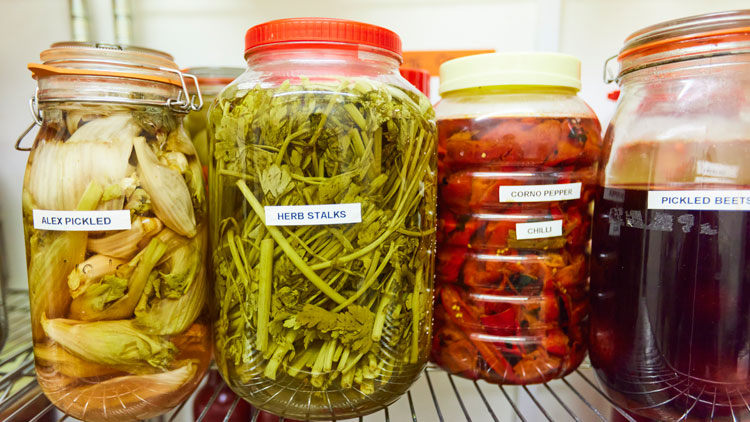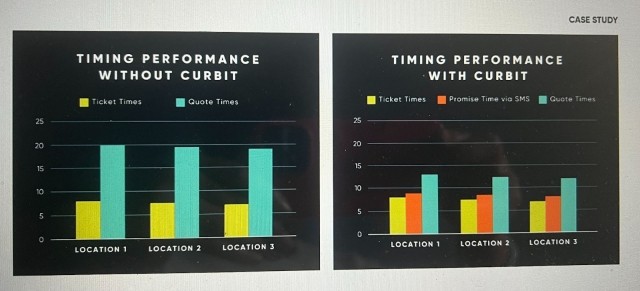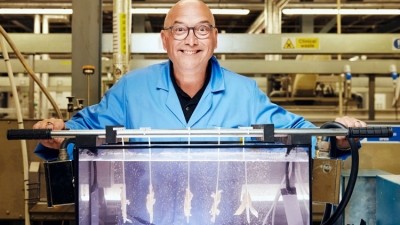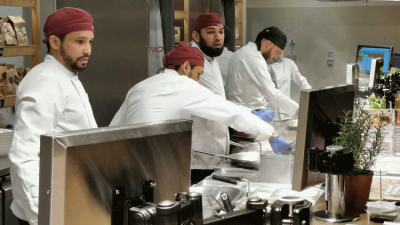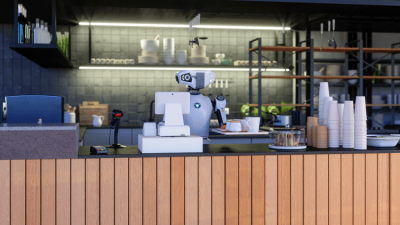The Restaurant of the Future: eight predictions for the kitchen
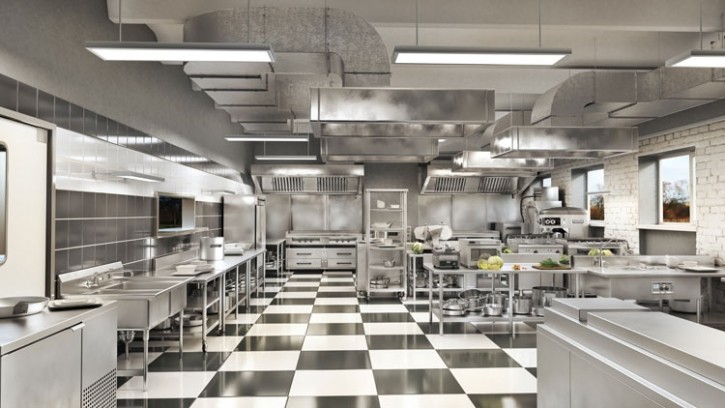
1. Hydrogen-powered kitchens
Is this piece of kit hydrogen compatible? It might sound both far fetched and a little dangerous but this is a question that chefs will soon be asking their suppliers as the UK looks to switch from natural gas to the more environmentally friendly hydrogen. The plans form part of the country’s strategy to achieve net zero by 2050. By then it is predicted that between 20% and 35% of the UK’s final energy consumption could be hydrogen-based, with the Government currently carrying out trials to work through all the cost, feasibility, and safety issues. Now, the race is on between catering equipment manufacturers to begin developing ‘hydrogen-ready’ equipment. One of the first out the gates is Falcon, which has introduced a range of hydrogen-powered commercial catering equipment to its portfolio. The company had previously been working for several years on the project, linking with Enertek International, the research and engineering consultants, and hydrogen specialists. “Introducing hydrogen-ready appliances is vital if the foodservice industry is to meet its net-zero carbon commitments,” says Falcon managing director Peter McAllister. “The team at Enertek, in conjunction with our research and development, have done a brilliant job in developing the appliances and gaining the necessary approvals and certification.” Falcon’s hydrogen-powered line-up includes a new variant of its Dominator six burner as well as chargrills, griddles, grills, and fryers. The range of products is designed for on and off-grid use to support the UK Government's’ efforts in scaling up low carbon hydrogen supply, and Falcon says it is already talking to dealers and customers about the switch to hydrogen. “For the initial launches we’re concentrating on developing hydrogen versions of our best-selling lines, to encourage as many operators as possible to make the swap to hydrogen and reduce their carbon emissions,” adds McAllister. “We believe whole-heartedly that hydrogen gas appliances have a major role to play in the future of the foodservice industry. These are pioneer products that lead the way in terms of contributing towards a more sustainable future.”
Supplier comment Winterhalter
Pay Per Wash is Winterhalter’s innovative finance scheme. There’s no need to buy a dishwasher – they provide a top quality model for free. You just pay for the washes. So if you’re not open one or two days a week, your dishwasher isn’t costing a bean. Pay Per Wash (PPW) covers the machine, the cleaning chemicals AND servicing. All you do is buy wash credits (online or by phone), then load it and push the button. PPW is available on Winterhalter UC (undercounter) and PT (passthrough) machines, all of which, as well as delivering top notch results, have energy and water saving features fitted as standard. So as well as getting super-clean dishes and glasses, you’ll be reducing running costs. There’s no contract, so you can give it back any time. Alternatively, if you decide to buy the machine, Winterhalter will take account of the money you’ve spent through PPW.
For more information contact Winterhalter here.
2. Team members that need plugging in
Robots really could be part of the answer to a staffing crisis that is showing little sign of abating. Currently, so-called robots are only able to do basic tasks - dropping fryer baskets and sanitising floors and surfaces being the most common ones back of house - but significant evolution is inevitable. While sous chefs probably don’t need to watch their backs just yet, robotic engineers are working on models that can complete more complex tasks. For example, a Cambridge University-based team recently looked to address one of the biggest barriers to robots becoming fully-fledged chefs by creating an egg-cooking automaton that could ‘taste’. According to the research, the robot tasted nine different variations of eggs and tomatoes at three different stages of the chewing process using a saline-sensing probe. The paper’s co-author Dr Arsen Abdulali, said the technology could make the robots better cooks. The International Federation of Robotics estimates that more than 350,000 robots were sold into the F&B sector last year. The vast majority of these will have ended up in fast food kitchens doing simple, repetitive tasks. A good example of this is Miso Robotics’s kitchen assistant Flippy. As the name suggests, the unit is designed to cook burgers but can also turn its robotic arm to fries and chicken. Founded in 2016, Miso Robotics is already being used by US group CaliBurger and is making inroads in Europe too having recently launched an equity crowd funding round on Crowdcube. “We are excited to open our first round of funding in the UK, a market where we see huge potential for the growth of the fast food sector and its use of smart technology to improve the experience for both customers and staff,” said Buck Jordan, CEO of Miso Robotics. “Technology is going to play a vital role in helping restaurants build back better, from improving health and safety to allowing workers to focus on less mundane roles.”
3. Waste not, want not
As it stands one third of all food produced for human consumption is either lost or wasted. With around a fifth of UK greenhouse gas emissions associated with food and drink, it is unsurprising that the Government is starting to look at ways to reduce food waste (it has already committed to eliminating food waste from landfill by 2030). Though the details are yet to be fully worked out, a major rethink of how commercial companies deal with food waste is imminent. Plans are under way to make it mandatory for businesses to separate their food waste from other types of waste and there will also be more strict rules around macerating and digesting waste (the practice of turning waste into grey water is also set to be banned). Businesses will also be required to record how much food they waste. Systems that convert waste to electrical power are likely to become more widespread but there is a less costly solution for forward-thinking businesses. It’s hardly a new idea but fermentation is a brilliant way of using both surplus produce and parts of ingredients that aren’t usually considered edible including skins, stalks and other offcuts. Acme Fire Cult founder Daniel Watkins uses ‘waste’ ingredients including leftover brewer’s yeast (the restaurant is on the same site as Dalston’s 40 Ft Brewery), fruit that’s past its best and stale sourdough. “The possibilities are endless. We started out with basic stuff like hot sauce and kimchi but we soon started to look at using waste products. 70% of our fermented products are made from things that other restaurants would bin. Wasting ingredients is wasting money, and that’s not an option in the current climate,” says Watkins, who now has a dedicated fermentation room and spends at least a day a week tending to his assortment of misos, pickles, vinegars, kojis and shoyus. It’s an inexpensive pursuit, requiring very little in the way of kit with Watkins’ biggest investment a decent PH reader he uses to check acidity levels are high enough to prohibit the growth of bad bacteria.
4. Back of house management technology continues to evolve
Back of house management technology has been quietly revolutionising how kitchens at larger groups are run for the past decade at least. But the companies behind them aren’t resting on their laurels, introducing new features to help restaurants stay competitive in a rapidly changing marketplace. The growth of takeaway and delivery has been a big driver for change, as has the pandemic-driven boom in mobile ordering. QSR Automations recently joined forces with US-based software solution Curbit to optimise the coordination of kitchen activities and online ordering systems to provide customers with real-time order status and a more streamlined delivery pick-up process. By working together, QSR Automations’ ConnectSmart Platform is able to maximise kitchen efficiencies by prioritising orders based on order times and customer proximity. The ultimate objective, the company says, is to improve efficiencies and grow sales and revenue for operators who serve off-premise customers. “When a customer places an order through a brand’s digital ordering channels, they receive a dynamic quote time, which accurately reflects a restaurant’s current kitchen capacity,” says QSR Automations vice president of sales and marketing Ashley Sheppard. “At checkout, they will then receive a further notification with an updated promise time and a link to track their order. A customer’s pick-up arrival is then orchestrated to ensure their meal is ready for collection at its peak order readiness - so they’ll receive a final notification alerting them to the fact their order is almost out of the kitchen and that they’ll be notified as soon as the restaurant is ready for them to collect, or indeed a delivery partner.”
Supplier case study: QSR Automations, Curbit and Tocaya
Tocaya, is a modern Mexican restaurant with 20 sites across the US. 50% of its sales originate online. The brand’s objective by joining the new QSR Automations and Curbit partnership was to improve pick-up time accuracy, thereby ensuring fresher food and a better customer experience. Through the integration with ConnectSmart Kitchen and Curbit, Tocaya was able to analyse data showing timing performances across wait times with and without Curbit, food dwell times with and without Curbit, together with quote times versus actual cook times.
The graph above shows configuration based quote times and on the right, dynamic quote times with promise times.The impact was an 8-minute reduction in published quote times for the customer. Following checkout, customers received updated promise times within 13 seconds of the actual ready time. The analysis illustrated an 11 minute reduction in food dwell times, which clearly demonstrates dynamic updates in real-time make a significant difference in pick-up accuracy and the customer experience.
To find out more about ConnectSmart Kitchen and how it can accelerate your off-premise dining offering click here or call 020 3870 4571.
5. Greater reliance on GPOs and real-time cost management
Sadly, input price volatility looks likely to be something the industry is going to have to learn how to live with. Geopolitical instability and the climate crisis have seen food prices yo-yo, making menu planning and costing a major headache for restaurants. With this in mind the use of procurement companies is likely to become even more commonplace. “A good group purchasing organisation will ensure their clients receive the same quality of goods and advise when beneficial to switch supplier or quantities based on the current market conditions,” says Entegra's director of business development Jaclyn Evans. “Companies like Entegra give businesses access to the best possible prices in the industry by combining the purchasing power of multiple companies to negotiate higher discounts than any single business could achieve. When businesses pool their buying power with other businesses, they benefit from upfront savings and pre-negotiated discounts.” Clever technology is also springing up to help restaurants keep a handle on margins. Jelly helps operators control costs in ‘real-time’ by extracting data from invoices and feeding it across an operator’s entire system, thereby giving those in charge the up-to-date information needed to make key business decisions. Murat Kilic, chef and owner of Amber Restaurant in London’s Aldgate, says that Jelly has revolutionised his workflow. “By automating supplier invoices down to the individual line item, I can conduct real-time costings for my restaurant. The Price Changes function also provides insights into ingredient price fluctuations, allowing me to make informed, real-time supplier decisions. I can now substitute high quality ingredients, switch suppliers and negotiate better deals just by looking at Jelly.”
Supplier comment
Foodservice Equipment Rental commercial manager Kelli Barrett
Since Food Service Equipment Rental (FER) launched in 2016, the company has grown exponentially and recently expanded into the US. Rental offers many advantages over purchase. It’s an all-in-one service that gives users piece of mind through inclusive maintenance of equipment, provides one number to call for support, no matter how many manufacturers’ equipment you have at your site and helps you get the equipment you need, without the upfront capital cost. FER has several rental models to help both new and established businesses procure their catering equipment and work with start-up and independent businesses, through to large scale multi-site operators and franchises. FER provides you with one number to call for support and an agreed call out time, and peace of mind for your kitchen operation.
To find out more about Foodservice Equipment Rental click here or call 01242 663000.
6. Generation rent?
Heraclitus’ observation that change is the only constant has never been so apposite. Faced with a rapidly changing marketplace, many will look to stay nimble by renting their kitchen equipment rather than purchasing it outright. Warewasher company Winterhalter spotted this trend early and has already had great success with its pay-per-wash scheme, which gives hospitality businesses access to high-performance dishwashers and glasswashers with no upfront costs. The company also now has a long-term rental scheme that allows businesses to rent any of its warewashers for up to six years at a fixed monthly rate which includes servicing and chemicals. Foodservice Equipment Rental says it has seen its business grow significantly in recent years as restaurants look to lower costs and stay flexible in an ever-changing marketplace. “One of the biggest benefits is the inclusive maintenance of equipment within your contract with agreed engineer call out times,” says commercial manager Kelli Barrett. “Our clients can specify whether they want new or used equipment and have an option to purchase or send back their equipment at the end of the rental period.” While in most cases renting equipment is more expensive than buying it outright it is an attractive option for businesses that want a clear view of costs because maintenance, repairs and replacement in the event of a unit being beyond repair are all included in the price. “More and more businesses now view rental as an option and due to the increasing energy prices, ingredients and oil inflation, more and more businesses are aiming to keep their upfront costs low,” adds Barrett.
7. Blockchain becomes commonplace for tracking products
Following the disturbing revelation earlier this year that tens of thousands of tonnes of mislabelled and even rotting meat has entered the supply chain there is likely to be an even sharper focus on traceability. Happily, technology has the potential to be a great help in this regard with the transparent and immutable nature of blockchain an ideal means of tracking products as they make their way through the supply chain. Many suppliers and restaurants are already using the technology - which also underpins crypto and NFTs - with sees data documented and updated on blockchain ledgers. In the event of an issue, users are able to easily pinpoint what has gone wrong. Once entered, information cannot be deleted or changed, and everyone connected to the blockchain can see everyone else’s fingerprints on the shared information. A practical application for this tech would be for a head chef to confirm that a delivery of chicken originated from the promised farm and never sat above a certain temperature while in transit. Blockchain can also cut down on admin, with smart contracts able to automatically able to release funds to vendors that have met the required parameters. What is more, restaurants can easily share blockchain information with those customers that want to know exactly where their dinner came from.
8. Shrinking kitchens
Ever rising property costs will continue to see kitchens shrink. Obviously, smaller spaces require kitchen equipment with a smaller footprint but equally as important is kit that can perform more than one function and kit that can cook food faster therefore increasing throughout. Multifunctional cooking equipment is most associated with businesses that cook large volumes of food but such kit is also growing in popularity for smaller ventures that see the benefit of reliable, energy-efficient (they are typically run on induction) and often smart cooking equipment that can perform multiple functions (typically braising, frying, boiling, steaming and sous vide). Key players in the space include Rational and Hobart but others are eyeing it up too. For example, Hubbard Systems’ Submarine range, made by Friulinox, is a multifunctional blast freezer which, in addition to blast chilling and freezing, can cook products at temperatures up to 85°C. This allows operators to undertake a selection of cooking processes before automatically switching to chilling or freezing. These range from slow cooking meat to proving and retarding bakery products. It’s also capable of a range of processes that require precise control over temperature, such as sous vide, dehydrating products and melting chocolate and confections. It can even store products, chilled or frozen, and hot hold them, too. Alongside this, the need for speed in kitchens is likely to see further advances in units that combine technologies including microwave, convection, air impingement and contact heating to cook food up to 20 times faster than standard cooking methods.
This article is part of our The Restaurant of the Future series. Click here to read the previous article.

